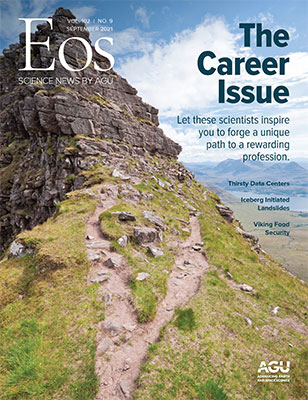The changes to teaching and learning at colleges and universities that many of us thought would last a few weeks in the spring of 2020 have turned into more than a year’s worth of disruptions. For both students and instructors, these disruptions have interrupted, set back, and, in some cases, irrevocably altered personal and professional lives and relationships, and they have severely strained mental—if not also physical—health.
The forced adaptations have also exposed unresolved and problematic realities in academia that long predate the pandemic, leading to difficult discussions but also creating welcome space for fresh perspective and growth. We reflect here on some of the negative and positive outcomes we’ve seen over the past year, as informed by our own experiences with students and colleagues.
Displaced and Disrupted
Pandemic disruptions to teaching, learning, and life took many forms. When colleges and universities instituted social distancing measures and turned to remote instruction, undergraduate students were rushed off campus. Many returned to family homes, where they were isolated from friends and lost the autonomy they had been cultivating while living independently. Subjected once again to household rules set by parents or other guardians, these students were essentially infantilized during the pandemic. Yet their institutions expected them to be mature adults and to keep to academic schedules as if nothing had changed. Many of our students, as they relayed to us, felt untethered, overwhelmed, and unable to sift through endless directions and FAQ pages from the schools about rapidly evolving pandemic protocols.
Meanwhile, graduate students lost access to facilities integral to their research, from offices to laboratory analytical equipment to field sites. They were expected to teach and learn online skillfully and to adjust without complaint. Their support networks became frayed as colleagues and mentors dispersed from campus.
For some students, the burdens of these changes were especially acute. We both work at large public institutions, where up to one quarter of our students are the first in their family to attend college and up to 20% are international students. These students’ lives were suddenly and disproportionately upended by displacement, underresourcing, isolation, and, in some cases, repatriation.
At the same time students were doing their best to adjust to the new landscape of higher education, so too were faculty and instructors. Among other challenges, individuals had to adapt in-person course materials, teaching styles, and mentoring duties to fully remote environments on the fly. They had to reconfigure research programs to account for pandemic restrictions. And many faced the added complexity of maintaining professional responsibilities while simultaneously caring full-time for loved ones also displaced from their usual routines. We, like many of our colleagues, often reminded ourselves of the phrase “I am not working at home because of the pandemic; I’m at home due to the pandemic—trying to work.”
Remote teaching brought important changes to student-teacher relationships. Prior to the pandemic, we took for granted the simple joys of greeting students when they arrived at class, helping facilitate discussions around our course content, and getting to know students—their career aspirations, their challenges, and their interests. During the pandemic, we have still held classes and office hours, conducted research, and mentored students—but all virtually. Although Zoom and other such tools are amazing technological innovations that have enabled us to perform our work, they tend to dull the emotional and personal connections that face-to-face contact builds.
Emotional Tolls
Although we hope the vaccines developed to protect against COVID-19 will enable a full return to prepandemic life, the experiences we have shared with students and colleagues throughout the pandemic will remain with us, with some hanging as shadows over the coming years of social and economic recovery. Of course, these experiences have also been influenced strongly by events not directly related to the pandemic, such as the attack on the U.S. Capitol and the murders of George Floyd and others as well as the large-scale demonstrations in support of racial justice. Among other effects, these events have brought heightened attention to systemic racism and injustice in many institutions, including our own, and have added substantially to the emotional and physical stress of the pandemic for many in academia, particularly people of color.
The pandemic has forced academia to grapple with declining mental health among students and faculty, a trend that began well before 2020.
Against this backdrop, the pandemic has forced academia to grapple with declining mental health among students and faculty, a trend that began well before 2020 [National Academies of Sciences, Engineering, and Medicine (NASEM), 2021a], particularly in science. Research has shown that in many cases, student learning and grades have improved during the pandemic, although these successes came with emotional costs. Prior to COVID-19, in spring 2019, three out of five college students reported experiencing extreme anxiety, and two out of five reported debilitating depression sometime in the preceding 12 months [American College Health Association, 2019]. In the past academic year, the trends in mental health have drastically worsened [NASEM, 2021a] as students have been deprived of the ability to engage with others; to participate in educational extracurricular activities and travel; and to pursue many professional and personal opportunities such as internships, fieldwork, and spring break. Moreover, many of our students have contracted COVID-19, including students in our research groups and in all of the courses we teach, and those who have not tested positive themselves have still had to deal with the virus affecting friends and family.
Faculty, who have long faced tremendous dysfunction in career expectations and work-life balance—especially for early-career faculty, women, and faculty of color—are also depressed, stressed, and burned out [NASEM, 2021b]. As of last fall, almost 9 out of 10 faculty surveyed agreed (33%) or strongly agreed (54%) that our jobs had become more difficult, 40% reported considering leaving the profession, and 48% of that number were early-career faculty. These stark figures partly reflect the emotional toll of taking on roles as informal, mostly untrained, and often poorly equipped mental health counselors to our students, which left faculty and students at risk.
We put ourselves through secondary trauma in supporting our students, colleagues, family, and friends while trying to carry on ourselves and maintain our own well-being.
Faculty members became critical elements in the support networks for many of our students, requiring us to share additional empathy and to develop new ways to connect, in virtual environments, with students suffering emotionally and physically. We also became critical conduits for sharing university-wide information, from academic schedule changes and new grading modalities to rent relief options in the community and plans for packing up dorms and apartments. This role required keeping up to date with frequently changing policies and information so we could share it clearly and quickly.
Make no mistake: This emotional work, called affective labor, is difficult—and it is labor indeed. Affective labor is the work associated with managing one’s own feelings when things are going to pieces around you—when others are upset, frightened, or angry. We put ourselves through secondary trauma in supporting our students, colleagues, family, and friends while trying to carry on ourselves and maintain our own well-being.
Because this care work has been borne mostly by women faculty and faculty of color, resulting impacts on careers—such as decreased research productivity and delayed promotions—will fall disproportionately on these groups and will affect academia for years to come.
Lights in the Tunnel
Despite the disruptions and added affective burdens placed on students and faculty throughout the pandemic, there have been some positive outcomes to emerge. We speak here not about the learned benefits of technology or of asynchronous learning and other pedagogical adaptations but, rather, of the emotional rewards we experienced during this time.
Students and faculty members bonded like teammates in spring 2020. We struggled with the technology needed for remote instruction, our students struggled with the technology, and we all learned it together. When pets, children, and spouses made visits to our home offices, our students loved seeing us get rattled, because it reminded them of our humanity. They started sharing their pets on screen, and everyone enjoyed getting to know more about one another. Students also shared the stresses of their family situations. We made as many adjustments as we could to help them get through each semester, including changing deadlines, amending or canceling assignments, and just simply listening to them.
Not surprisingly, the camaraderie waned as the pandemic progressed, and by the end of the spring 2021 semester, many students were exhausted from remote learning and the loss of the college environment. This transition only increased the emotional workload for faculty and led to increased frustration and fatigue.
The door to richer teaching and learning experiences has been opened during the pandemic.
Nonetheless, the door to richer teaching and learning experiences has been opened during the pandemic. Faculty have opportunities to embrace the role we play in helping students transition to adulthood and to recognize that course content is not the only currency of value to our students. It humanizes us, and our students, when we take the time to get to know them, to open up ourselves, and to admit to the stresses, emotions, and frustrations with which we struggle.
Faculty in science, technology, engineering, and mathematics (STEM) disciplines have historically taken a pass on doing this sort of emotional work. In our classrooms, we traffic in content—observations, calculations, and hypotheses—not in personal stories and cultural issues. We have often told ourselves, “Science doesn’t see color or gender,” “I couldn’t possibly deal with racism because I teach science,” and “Science is not driven by society,” although in each case there is much evidence to the contrary. If we have learned nothing else from the pandemic, we have seen that both we and our students value a more personal approach to instruction.
Outside the classroom as well, there are many things that faculty can do to help themselves and each other: foster, renew, and make new connections with mentors, advisers, colleagues, friends, and family; and develop or continue activities that provide a sense of community among instructors. At the University of Michigan, for example, faculty have set up monthly teaching circles—held virtually during the pandemic—at both departmental and college levels. Teaching has often been a lonely endeavor and not the topic of hallway discussions at research universities, so these regular opportunities to meet have enabled needed support networks and chances to learn and grow professionally. The AGU Education section also provides resources and a venue in which to find, connect with, and support other Earth and space science faculty, both professionally as colleagues and personally as friends.
The affective labor of connecting more deeply with students and colleagues takes time and energy—but it matters. It can make a big difference in helping STEM faculty and their students recover from the myriad disruptions of the pandemic and reshape what postsecondary teaching and learning look like.
References
American College Health Association (2019), American College Health Association-National College Health Assessment II: Spring 2019 reference group executive summary, 19 pp., Silver Spring, Md., https://www.acha.org/documents/ncha/NCHA-II_SPRING_2019_US_REFERENCE_GROUP_EXECUTIVE_SUMMARY.pdf.
National Academies of Sciences, Engineering, and Medicine (NASEM) (2021a), Mental Health, Substance Use, and Wellbeing in Higher Education: Supporting the Whole Student, 212 pp., Natl. Acad. Press, Washington, D.C., https://doi.org/10.17226/26015.
National Academies of Sciences, Engineering, and Medicine (NASEM) (2021b), Impact of COVID-19 on the Careers of Women in Academic Sciences, Engineering, and Medicine, 194 pp., Natl. Acad. Press, Washington, D.C., https://doi.org/10.17226/26061.
Author Information
Tanya Furman ([email protected]), Pennsylvania State University, University Park; and Mark Moldwin, University of Michigan, Ann Arbor
Citation:
Furman, T., M. Moldwin (2021), Higher education during the pandemic: Truths and takeaways, Eos, 102, https://doi.org/10.1029/2021EO160171. Published on 25 June 2021.
Text © 2021. The authors. CC BY-NC-ND 3.0
Except where otherwise noted, images are subject to copyright. Any reuse without express permission from the copyright owner is prohibited.


